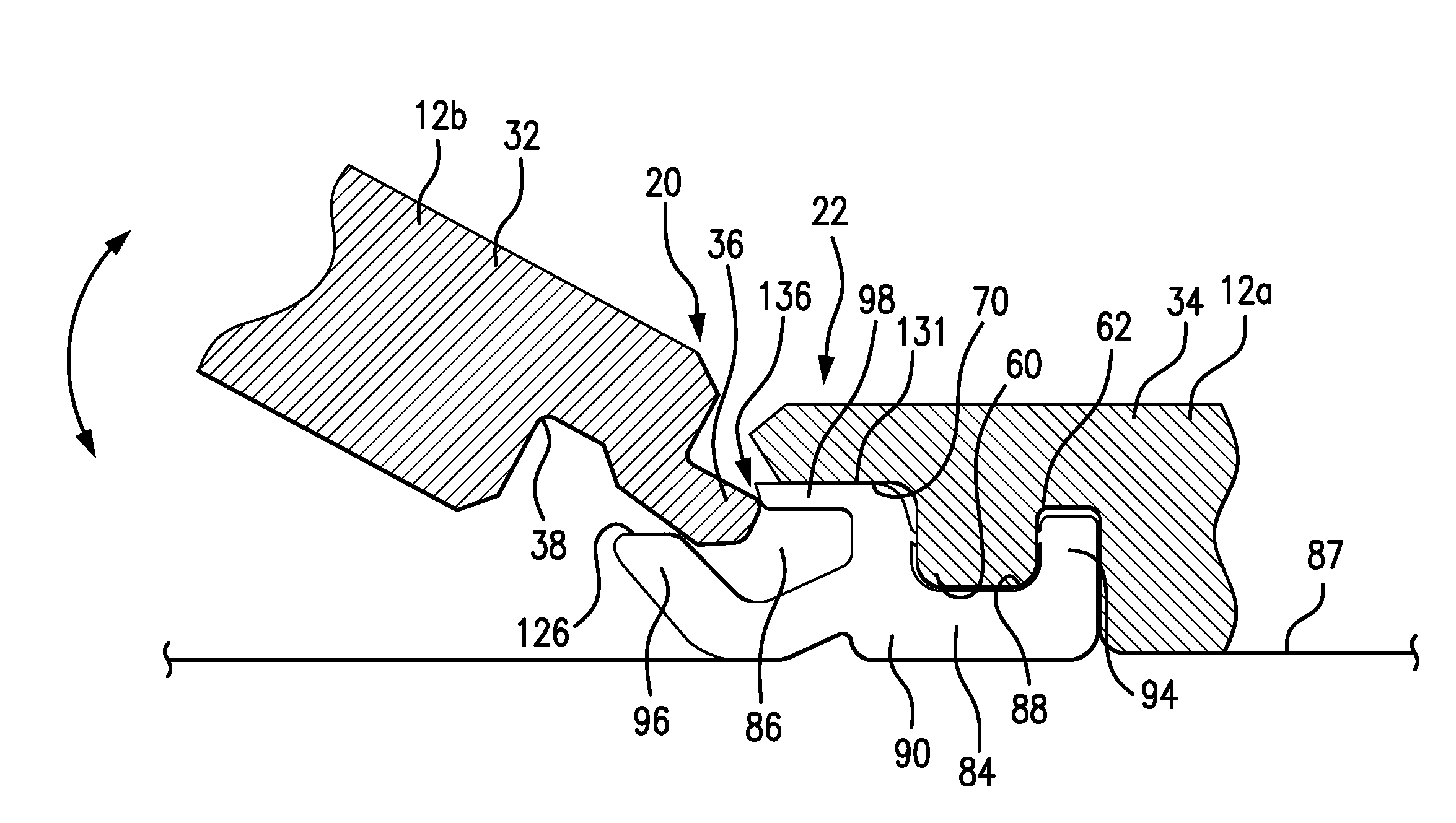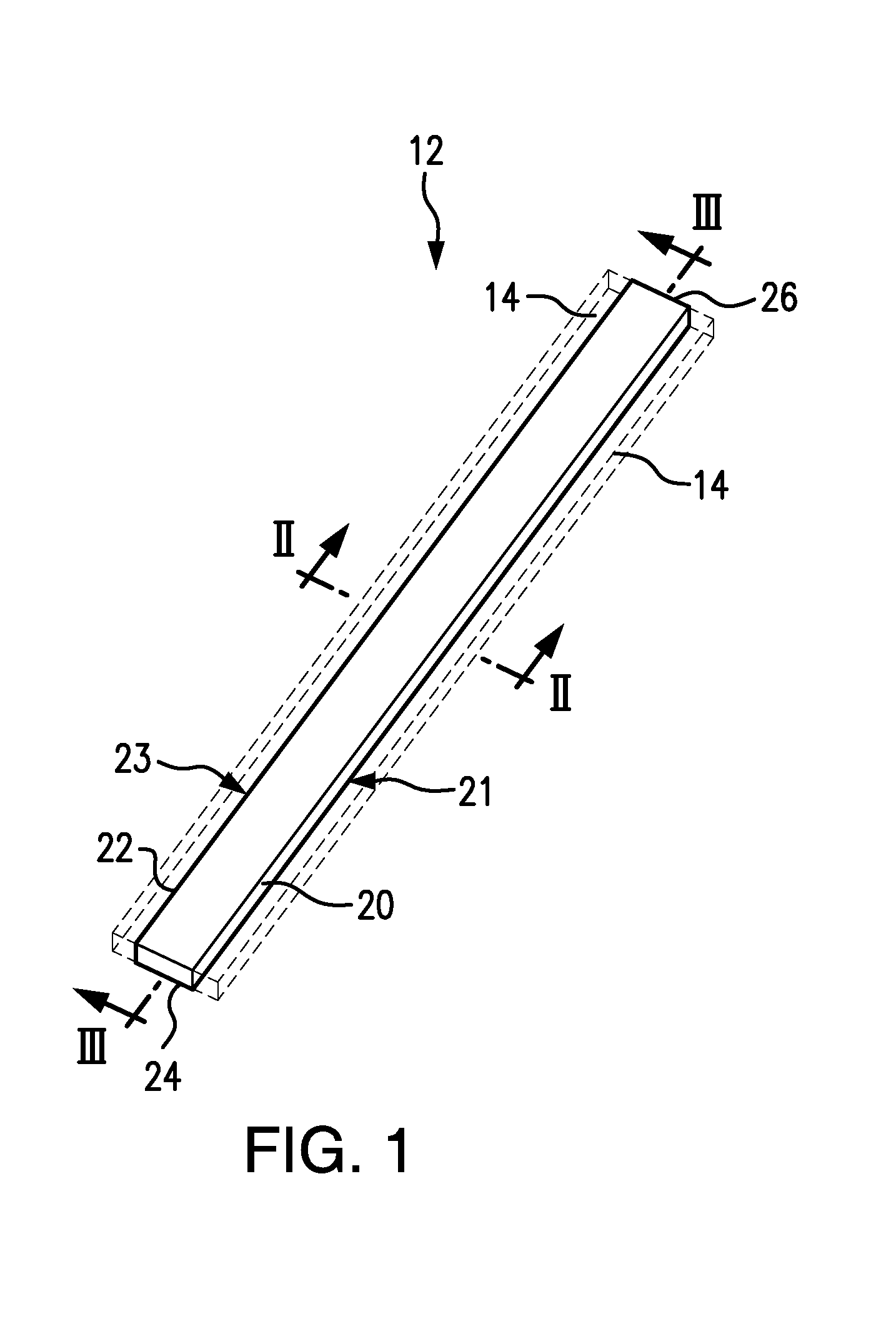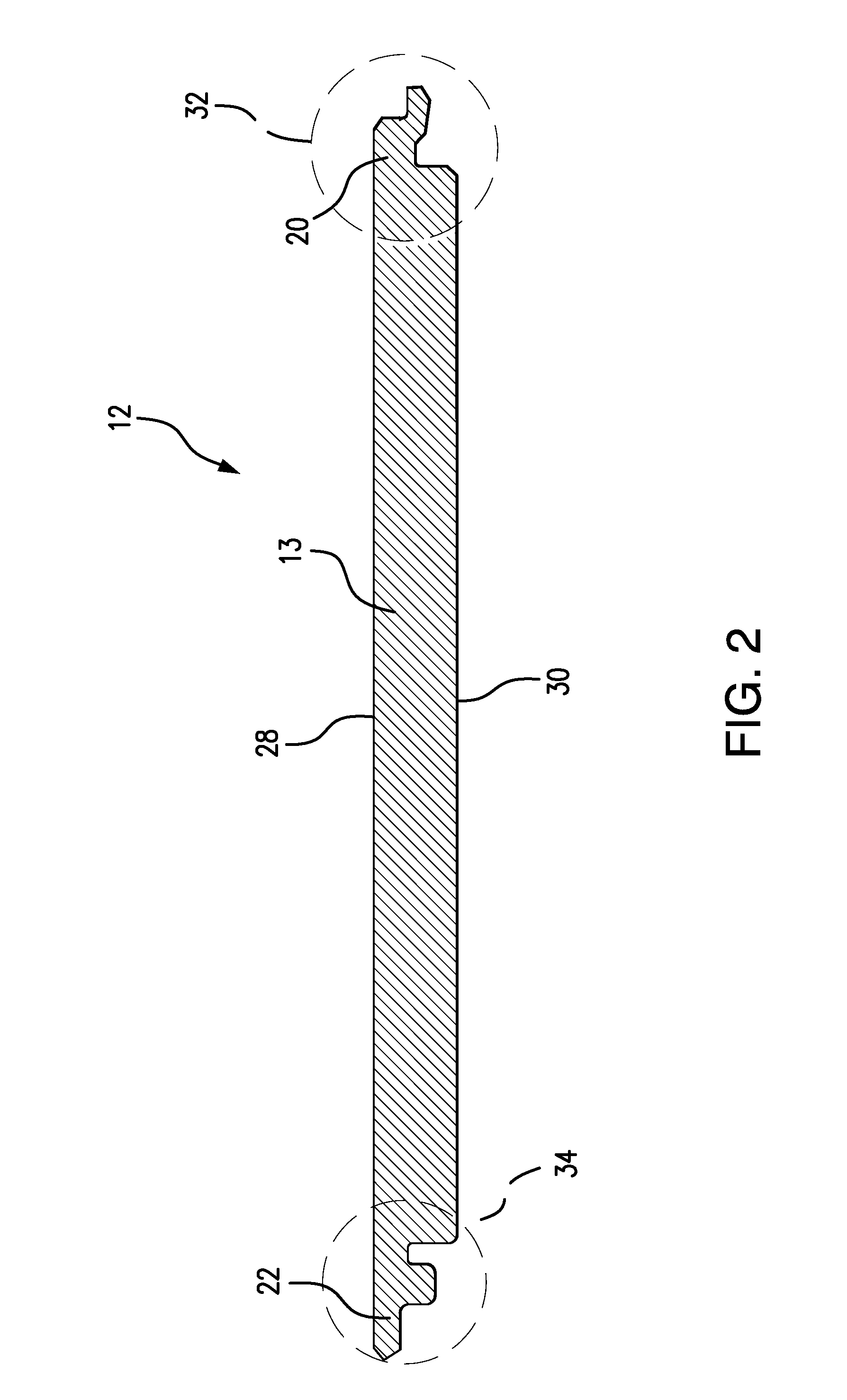Connecting System For Surface Coverings
a technology of connecting system and surface covering, which is applied in the field of surface covering, can solve the problems of difficult connection of the other side edges of the plank with yet another similar plank, difficult to connect the edge portions of the plank with another similar plank, and disadvantages of current floor systems, so as to improve the ease of installation, facilitate the connection, and enhance the effect of pullout strength
- Summary
- Abstract
- Description
- Claims
- Application Information
AI Technical Summary
Benefits of technology
Problems solved by technology
Method used
Image
Examples
Embodiment Construction
[0044]In the present invention, it is understood that the various embodiments shown in the Figures are illustrative, and unless indicated otherwise are not necessarily drawn to scale. Further, any dimensions given for various structural features are for illustrative purposes only, and are in no way intended to limit the scope of the present invention.
[0045]The present invention relates to a surface covering system having a plank including mechanically mating features defined in opposite edges and a connector configured to provide unique connection systems. The plank can be assembled in a modular detachable manner with other similarly configured planks to provide surface-coverings that are convenient to install and that have enhanced drift-resistance and other beneficial performance.
[0046]The plank of the present invention can comprise a plank that includes a tongue profile extending along a first edge of the plank, a downwardly extending rib profile extending along a second edge opp...
PUM
 Login to View More
Login to View More Abstract
Description
Claims
Application Information
 Login to View More
Login to View More - R&D
- Intellectual Property
- Life Sciences
- Materials
- Tech Scout
- Unparalleled Data Quality
- Higher Quality Content
- 60% Fewer Hallucinations
Browse by: Latest US Patents, China's latest patents, Technical Efficacy Thesaurus, Application Domain, Technology Topic, Popular Technical Reports.
© 2025 PatSnap. All rights reserved.Legal|Privacy policy|Modern Slavery Act Transparency Statement|Sitemap|About US| Contact US: help@patsnap.com



